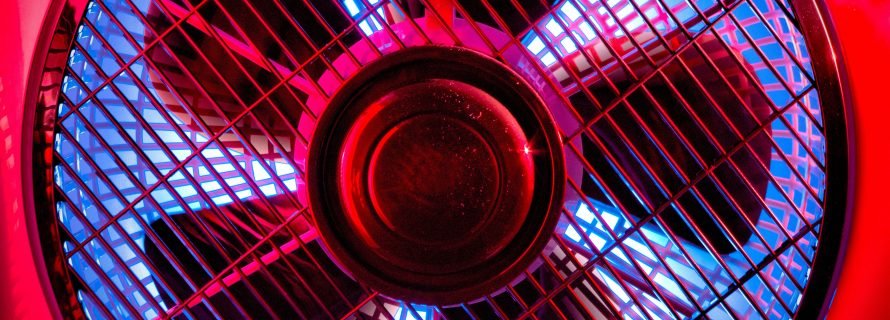5 Steps to Prevent Mold After Water Damage

Water damage is one problem most homeowners want to avoid at all costs. Aside from it being not easy to clean up, water can sink into the building materials where it lingers for days when not dried properly. Lingering moisture will not only weaken the floors and walls, it can also compromise the structural integrity of the house.
In similar cases, hiring a water damage restoration company is considered ideal as it can help warrant water cleanup is done before any costly damage can occur. One of the most troublesome (and expensive) consequences of water damage is mold. Once the water is cleared, preventive measures should be observed to avoid mold infestation.
How Mold Develops
To prevent molds from developing, you first need to understand how they develop. Mold and mildew are different types of fungi that grow and thrive in dark and damp places. Mold infestation often occurs after water damage as excessive moisture provides the ideal place for them to grow.
After a massive leak or flood, water sinks into the porous building materials of the home. The excess moisture or humidity in the air makes it impossible for the water to evaporate completely. Often, the porous and damp building materials have sufficient organic compounds that allow mold to grow.
What’s even more alarming? Mold growth can occur within 24 to 48 hours of the water disaster. That means you have a tiny window to prevent mold from growing. If moisture is allowed to linger for an extended period, you can surely see mold.
How to Prevent Mold Growth and Infestation
Water that’s left unattended can cause mold in your house. As much as possible, it is essential to keep mold from developing as they will not only cause massive damage to your property, they can also cause several health-related problems such as asthma, lung irritation, and allergies.
Mold can also spread once the water evaporates into the air, especially during rainy or humid conditions. This is why cleaning water damage immediately is critical. Aside from working with a water damage restoration company, the following tips can also help mitigate damage and prevent mold from developing.
1. Ensure the flooded areas are clean and dried right away.
When it comes to water damage, time is of the essence. It is important to remember that the longer the water sits, the harder it is to repair the damage. Make it a point to start cleaning within 48 hours of the flooding. As soon as the storm stops, check every part of the house for water, leaks, and spills.
Once you have identified flooded areas, start cleaning and drying them up as soon as possible. If there are wet rugs or floor carpets, dry them first using a vacuum cleaner. You can also use a fan to complete the drying process. Ideally, keep the fan on for 24 hours (or more). Once dry, you can also steam-clean your carpet.
2. Dehumidify your house and watch the humidity levels.
Right after a flood or storm, moisture in the air can result in mold growth. Getting the house as dry as possible is essential if you want to keep mold at bay.
- Turn on all the fans
- Open windows in your home
- Use a dehumidifying machine to keep the air clean, cool, and dry
To keep an eye on humidity levels, you can use a humidity monitor. Ideally, it should be below 60 percent in the summertime. During winter, 25 to 40 percent is considered normal.
3. Check your home’s exterior
Aside from checking your home’s interior, you need to check your home’s exterior as well. Look for any pooling water near foundations as they can cause cracks and mold growth. To prevent pool water from accumulating, consider fixing your grade, extending your downspouts, or adding a french drain.
4. Throw away what can’t be cleaned
Some things can’t be thoroughly cleaned and dried. For instance, some electronics can become useless once they are waterlogged. However, before throwing the items away, ensure they are all accounted for in your insurance claim. You have to remember that you will need documentation of all the damage to your belongings before your claim is approved.
5. Sanitize everything
All water damaged furniture and areas need to be wholly sanitized after cleaning. For your bed, sofa, and other furniture, you can use a wet and dry vacuum cleaner or a steam cleaner. For surfaces such as walls and floors, clean them up with soap and water and use a water-chlorine bleach solution to sanitize them.
Conclusion
Preventing mold growth after water damage is no easy feat. After all, cleaning, drying, and sanitizing all affected items can be a painstaking process. While the following steps can be done to help prevent mold growth, getting help from a water damage restoration company is still the best way to go.
About the Author: Rachel Anderson is the Content Marketing Strategist of Arizona Fire & Water Restoration, Inc., a Phoenix-based company that provides water, fire and smoke damage restoration as well as mold remediation and removal services. When not writing, she plays bowling and goes on trail hikes with her friends.
Photo by Immo Wegmann on Unsplash
- Additions and New Construction
- All Exteriors
- Alterations
- Basements
- Bathrooms
- Customer Service
- Customer Stories
- Decks
- Design & Planning Show
- DIY
- Doors
- Educational Resources
- Extreme Makeover Home Edition
- Fashion Show
- General Remodeling
- Green Living
- Handyman Home Services
- Home Decor
- Home Entertainment
- Home Improvement
- Home Improvements
- How to Tips
- In The Community
- Kitchens
- Off-the-Wall Remodeling Stories
- Remodeling
- Resources
- Roofing
- Siding
- Social Media
- Sunrooms
- Tips & Tricks
- Trends
- Windows

